
Forest Ecosystems
Scope & Guideline
Driving impactful research for ecological stewardship.
Introduction
Aims and Scopes
- Forest Ecology and Biodiversity:
Research on the diversity of tree species, plant communities, and the ecological interactions that sustain forest ecosystems. This includes studies on species assemblages, functional diversity, and the effects of disturbances on biodiversity. - Forest Management and Sustainability:
Investigations into sustainable forest management practices, including the impacts of harvesting, restoration techniques, and management strategies on forest health and productivity. - Carbon Dynamics and Climate Change:
Studies focusing on carbon sequestration, soil carbon dynamics, and the effects of climate change on forest ecosystems. This area includes research on the role of forests in mitigating climate change and assessing their resilience. - Forest Restoration and Rehabilitation:
Research aimed at understanding the processes and outcomes of forest restoration efforts, including the ecological impacts of reforestation and afforestation initiatives. - Remote Sensing and Modeling:
Utilization of remote sensing technologies and modeling frameworks to assess forest structure, biomass, and health, as well as to predict responses to environmental changes. - Soil-Plant Interactions:
Exploration of the relationships between soil properties and plant growth, including nutrient cycling, soil microbial dynamics, and the effects of different land-use practices.
Trending and Emerging
- Machine Learning and Data Analytics:
There is an increasing trend in the application of machine learning techniques for analyzing forest data, improving predictions of forest dynamics, and enhancing the accuracy of forest inventory assessments. - Ecosystem Services and Multifunctionality:
Research focusing on the multifunctionality of forest ecosystems, including their roles in biodiversity conservation, carbon storage, and provision of ecosystem services, is gaining momentum as more studies assess the broader impacts of forest management. - Climate Change Adaptation Strategies:
A growing body of work is emerging around strategies for forest adaptation to climate change, including resilience assessments and the exploration of species' responses to shifting environmental conditions. - Soil Carbon Sequestration Research:
An increasing emphasis on understanding soil carbon dynamics and the factors influencing carbon sequestration within forest ecosystems reflects the urgent need to address climate change and its impacts on soil health. - Functional Trait Diversity:
Emerging studies are increasingly focusing on the functional traits of trees and their implications for ecosystem processes, highlighting the importance of species interactions and community dynamics in forest ecosystems.
Declining or Waning
- Invasive Species Impact Studies:
Research related to the effects of invasive species on forest ecosystems has seen a decline. This may indicate that previous findings have been sufficiently addressed, or that researchers are now focusing on other pressing issues in forest ecology. - Traditional Forest Inventory Techniques:
There is a noticeable reduction in studies utilizing conventional forest inventory methods, as newer technologies and approaches, such as remote sensing and machine learning, gain traction and demonstrate superior efficiency. - Historical Analysis of Forest Changes:
Although historical analyses remain important, there has been a shift away from purely historical studies towards more contemporary and predictive approaches, reflecting a need for immediate solutions in forest management. - Single Species Focus:
Research focusing exclusively on single tree species is becoming less common, as there is a greater emphasis on multi-species interactions and ecosystem-level studies that consider the complexity of forest dynamics.
Similar Journals

Journal of Forest Science
Pioneering advancements in forestry and environmental science.Journal of Forest Science, published by the Czech Academy Agricultural Sciences, serves as a pivotal resource in the field of forestry and soil science. With its ISSN 1212-4834 and E-ISSN 1805-935X, this Open Access journal has been delivering insightful research since 2003, making knowledge freely available to researchers and practitioners globally. Hailing from the Czech Republic, the journal has established a notable impact within the academic community, as evidenced by its placements in the Q2 quartile for Forestry and Q3 for Soil Science according to the latest rankings. This positions the Journal of Forest Science favorably within academic discourse, ranking #73 out of 174 in Forestry and #84 out of 159 in Soil Science on Scopus, placing it at the 58th and 47th percentiles respectively. Covering a wide range of topics that intersect with environmental sustainability, forest management, and ecological research, the journal aims to foster innovation and collaboration within the scientific community. Researchers, professionals, and students can access published articles easily, bolstering the advancement of knowledge in forest science and its related disciplines.

CANADIAN JOURNAL OF FOREST RESEARCH
Exploring sustainable solutions for forest ecosystems.Canadian Journal of Forest Research (ISSN: 0045-5067, E-ISSN: 1208-6037), published by Canadian Science Publishing, stands as a leading platform for disseminating cutting-edge research in the field of forestry and ecological sciences. With an impressive impact factor and a steady reputation for high-quality publications, this journal occupies a prestigious position indicated by its Q1 ranking in Forestry and Q2 in Ecology as of 2023, alongside commendable placements in global and planetary change studies. Covering a broad scope from sustainable forest management to the impacts of climate change on forest ecosystems, the journal encourages submissions that address contemporary challenges and innovations in forest research. Operating from its base in Ottawa, Canada, the Canadian Journal of Forest Research has been a cornerstone of academic discourse since 1974, offering researchers and professionals vital access to pioneering studies that inform policy and practice in forestry. Researchers, educators, and students alike will find this journal an indispensable resource for advancing knowledge and fostering collaboration in the vital realm of forest research.
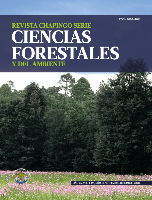
Revista Chapingo Serie Ciencias Forestales y del Ambiente
Advancing knowledge in Ecology and Forestry.Revista Chapingo Serie Ciencias Forestales y del Ambiente, published by Universidad Autónoma Chapingo, serves as a prominent platform for scholars and practitioners in the fields of Ecology and Forestry. Established in 2001, this open access journal has made significant strides in disseminating research that addresses pressing environmental issues, particularly within the Mexican context. With an ISSN of 2007-3828 and E-ISSN of 2007-4018, it has been recognized for its contributions, earning a Q3 ranking in both Ecology and Forestry categories as of 2023. The journal is pivotal in fostering collaboration and knowledge exchange among researchers, professionals, and students dedicated to understanding and preserving forest ecosystems. Access to its rich content is unrestricted, enhancing visibility and impact for innovative research and practical applications in sustainable management and conservation practices.
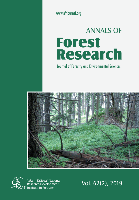
Annals of Forest Research
Cultivating a deeper understanding of our forests.Annals of Forest Research is a peer-reviewed journal dedicated to advancing knowledge in the fields of forestry, ecology, and plant sciences. Published by EDITURA SILVICA in Romania, this journal has been an open access publication since 2008, providing a platform for researchers to share their insights and findings with a global audience. The journal operates under a rigorous selection process, reflected in its positioning within the Q2 category in Forestry and Q3 in both Ecology and Plant Science as of 2023. With Scopus rankings indicating a solid percentile among its peers, Annals of Forest Research continues to play a vital role in disseminating innovative research and fostering scholarly dialogue. Researchers, professionals, and students are encouraged to explore its diverse range of articles, which address both foundational and contemporary issues in forest management and environmental sustainability, contributing to the sustainable use and preservation of forest ecosystems.
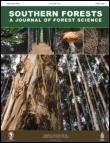
Southern Forests-A Journal of Forest Science
Advancing Sustainable Solutions for Forest ManagementSouthern Forests: A Journal of Forest Science, published by Taylor & Francis Ltd, serves as a vital platform for scholarly discourse in the field of forestry. With a robust ISSN of 2070-2620 and E-ISSN of 2070-2639, this journal highlights cutting-edge research and vital advancements from 2008 to 2024. Based in the United Kingdom, it continues to make significant contributions, evidenced by its current Q3 ranking in the forestry category of Scopus as well as its rank of 94 out of 174 in Agricultural and Biological Sciences. This journal caters to a diverse audience of researchers, professionals, and students, providing access to high-quality articles that promote sustainable forest management and ecological studies. Despite being classified as a non-open access journal, it remains a key resource, ensuring accessibility to crucial information that addresses both local and global forest challenges.
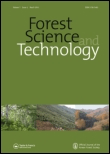
Forest Science and Technology
Elevating forestry knowledge to tackle global challenges.Forest Science and Technology is a premier open access journal published by Taylor & Francis Ltd, based in the United Kingdom. Established in 2005, this journal has become a key platform for disseminating high-quality research in the fields of Forestry and Environmental Science, maintaining a strong impact factor and impressive Scopus rankings. As of 2023, it proudly holds a Q2 quartile ranking in Forestry and a Q3 quartile ranking in Management, Policy, and Law categories, highlighting its significance in addressing contemporary challenges in forest management and conservation. With a dedication to fostering scholarly communication, the journal supports open access since 2017, making valuable findings accessible to a wider audience, including researchers, professionals, and students. With the coverage period extending to 2024, Forest Science and Technology continues to contribute to the discourse on sustainable forestry practices and innovative management strategies.
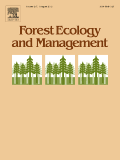
FOREST ECOLOGY AND MANAGEMENT
Elevating Knowledge in Forest EcosystemsFOREST ECOLOGY AND MANAGEMENT is a premier peer-reviewed journal dedicated to the integral study of forest ecosystems and their management, published by Elsevier in the Netherlands. With an impactful presence in the field, this journal boasts a prestigious Q1 ranking in multiple categories, including Forestry, Management, Monitoring, Policy and Law, and Nature and Landscape Conservation as of 2023. It addresses key issues relevant to sustainable forest practices, conservation strategies, and environmental monitoring, making it a vital resource for researchers, practitioners, and policymakers alike. The journal is indexed with an impressive Scopus rank, placing it among the top tier of titles in Agricultural and Biological Sciences and Environmental Science. While it does not offer Open Access options, its rigorous review process and high visibility make it essential for those seeking to stay abreast of the latest findings and trends in forest ecology and management. Published continuously since 1976, FOREST ECOLOGY AND MANAGEMENT aims to foster interdisciplinary collaboration and advance knowledge critical to the stewardship of forest resources in an ever-changing global landscape.

Scientia Forestalis
Pioneering sustainable practices through rigorous research.Scientia Forestalis is a prominent academic journal dedicated to advancing the field of forestry and environmental studies. Established in 1996 and published by the Instituto de Pesquisa e Estudos Florestais (IPEF) in Brazil, this journal provides a critical platform for researchers and practitioners to disseminate innovative studies and findings in forestry. With an HIndex reflective of its academic impact and ranking in the third quartile of forestry journals, Scientia Forestalis is positioned to cater to a diverse audience, including scholars, professionals, and students engaged in agricultural and biological sciences. Despite its non-open access model, the journal maintains a commitment to high-quality research that fosters an understanding of forest ecosystems and sustainable practices. Published articles span a wide range of topics, ensuring that crucial developments in forestry science are captured and shared. The journal's current Scopus rank places it within the 26th percentile, affirming its role in shaping forestry research in a global context, making it an essential resource for anyone interested in this vital field.

NEW FORESTS
Pioneering Research for Tomorrow's Forests.NEW FORESTS, published by SPRINGER, stands at the forefront of forestry research, delivering cutting-edge insights into forest science, management, and conservation. With an ISSN of 0169-4286 and an E-ISSN of 1573-5095, this esteemed journal has earned a distinguished reputation as it continues to contribute significantly to the field since its inception in 1986. As evidenced by its impressive ranking in the Q1 category for Forestry and being positioned at #32/174 in the Scopus Ranks for Agricultural and Biological Sciences, NEW FORESTS maintains an 81st percentile standing, emphasizing its influential role in advancing scientific discourse. The journal focuses on a diverse array of topics within the realm of forestry, making it an essential resource for researchers, professionals, and students eager to engage with contemporary developments and challenges in forest ecosystems. Although it is not an open-access journal, access to its articles can be facilitated through various academic institutions and libraries, ensuring that vital research is available to a broad audience. As we look toward the future, NEW FORESTS continues to strive for excellence, fostering dialogue and collaboration among scholars committed to sustainable forest management and restoration until at least 2024.

Sylwan
Fostering sustainable development in forestry across Europe.Sylwan, published by POLSKIE TOWARZYSTWO LESNE, is a key journal in the field of forestry, focusing on the science and practice of sustainable forest management and conservation. Operating since 1979 and releasing issues periodically, including those from 2011 to 2018 and from 2020 to 2024, this journal plays a vital role in disseminating research and advances in forestry practices particularly relevant to Poland and the broader European context. While currently not offering open access options, Sylwan maintains a Q4 ranking in the forestry category according to the Scopus database, highlighting its dedicated niche within the scientific community. The journal serves as an essential resource for researchers, professionals, and students seeking to enhance their understanding of forestry issues in a global and ecological framework. With a commitment to promoting innovative research, Sylwan supports the ongoing dialogue on forestry management and policies, ultimately contributing to the sustainable development of forest resources.